The Las Vegas pipeline is dead. The Las Vegas pipeline is alive.
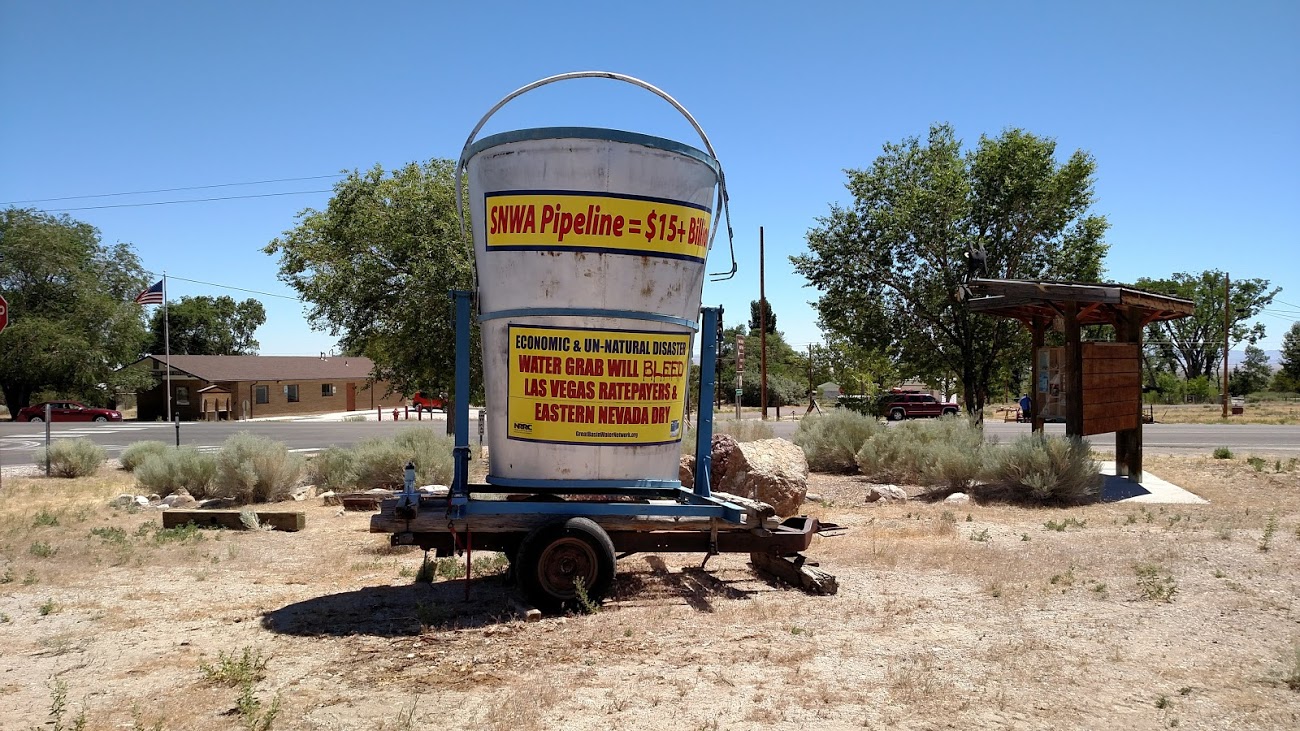
Even when the Las Vegas pipeline is dead, the Las Vegas pipeline is alive.
On Friday last week, Nevada’s top water regulator dropped a 111-page ruling widely interpreted as the final blow to Las Vegas’ vexed campaign to pump groundwater from Eastern Nevada and pipe it to the state’s growing urban center — the country’s driest city — about 250 miles away.
The ruling denied the Southern Nevada Water Authority the right to pump billions of gallons of water from rural Nevada aquifers, transport it down south and connect it to Las Vegas taps.
“This ill-conceived multibillion dollar boondoggle is now dead in the water,” Abigail Johnson, who directs the Great Basin Water Network, a coalition of ranchers, tribes and environmental groups, said in a statement. “After a string of court victories, we have a decision showing that the water is not available for this project without hurting the area’s existing water rights and environment.”
Pipeline dead.
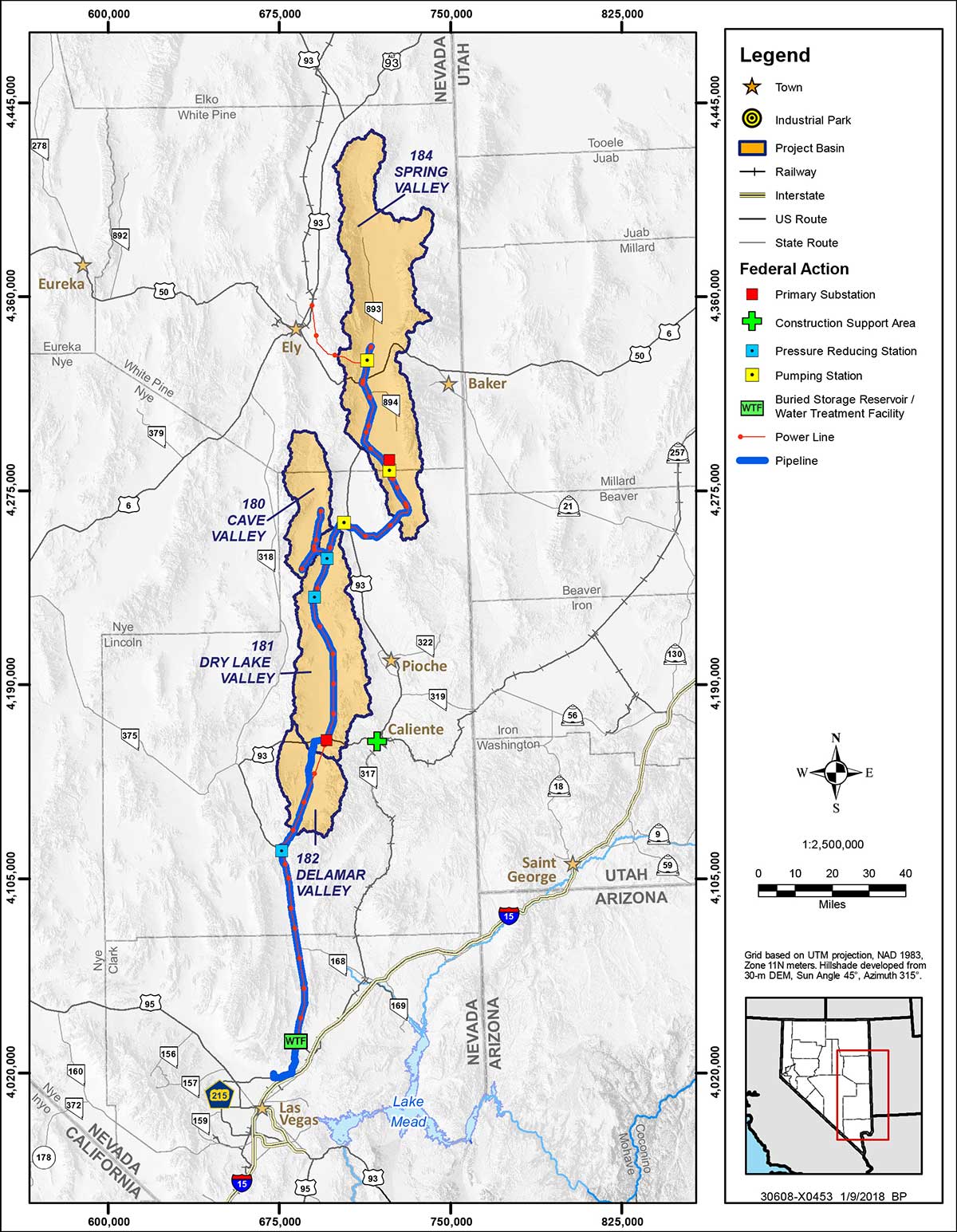
And yet the complicated ruling, described by some water experts as peculiar, also kept the pipeline alive. In a very rare move, Nevada regulators said that, because a 2013 court order had forced them to use a certain methodology, they plan to file a legal appeal of their own ruling.
When asked on Wednesday if the pipeline is dead, the water authority’s general manager, John Entsminger, responded “no” and said elements of the ruling could be seen as good for the water provider.
“The ruling is good because the state engineer verified that the water is available,” he said, noting that the state’s decision also affirmed a mitigation and groundwater monitoring plan.
The water authority has always looked at the pipeline as a last-resort option to augment the water authority’s main source of water: the Colorado River. The river, threatened by overuse and drought, supplies Las Vegas with 90 percent of its water, and the utility has long believed it’s necessary to diversify its portfolio and plan for the worst: Colorado River cuts.
Due mainly to conservation, the pipeline has not been needed yet, Entsminger said, and the water authority does not project a need to pump groundwater for about two decades. But he stressed that it was important to keep the option on the table along with other potential water supplies, such as desalination.
Pipeline alive.
It’s all in the ground
If the Colorado River factors into Las Vegas’ future, groundwater controls the destiny of Snake Valley. On a stormy summer day during the Great Basin’s Monsoon season last year, Tom Baker drove me around his family’s ranch, which first began operating in 1876. The ranch straddles the Nevada-Utah border near Baker, the gateway town to Great Basin National Park.
As arid as Nevada can be, dozens of springs dot Snake Valley. At the edge of one large spring, you can see groundwater bubbling up from beneath the surface. Springs across Nevada form from the groundwater discharge, inextricably linked to invisible water stored in the aquifers below them.

Snake Valley is one of the basins the water authority has targeted for groundwater pumping, and the Baker family has been one of the most vocal opponents of the pipeline project. They have long worried that the pumping will dry up springs that originate from precipitation in the mountains and flow underground into the groundwater basin that supports their ranch.
“It’s obviously a win,” Baker said in a phone interview about last week’s ruling. “They predicted they would be using the pipeline by now. But they don’t even have valid permits to drill wells.”
He stopped short of calling it “dead.”
“We're excited about [the ruling],” he said. “We don't know where it will end up."
A limited scope
In many ways, the ruling is limited in its scope. In 1989, the water authority was looking at a growing population and a concern that taps could go dry heading into the next century. Facing that dire projection, the water authority filed applications with the state for an annual right to billions of gallons of water in the sparsely-populated basins counties north of Las Vegas.
The idea was that the water authority could develop the groundwater and ship it to Las Vegas if the situation on the Colorado River ever became so dire that the city's water supplies were shorted. Where Baker lives in Snake Valley, the water authority has applied to pump roughly 50,000 acre-feet of water annually, enough to fill more than 37,000 football fields with one foot of water.
Yet regulators have not made a final ruling on those applications for rights in Snake Valley. The applications pending and no rights have been awarded. In fact, recent versions of the pipeline project do not include Snake Valley.
In the ruling last Friday, the state considered the water authority’s applications for water rights in four separate basins: Spring Valley, Cave Valley, Dry Lake Valley and Delamar Valley. And in some ways, the ruling can be viewed as another procedural step in long-running litigation over the applications.
The Nevada Supreme Court will likely have the final say.
The pipeline project — and these water rights in particular — have been the subject of intense court battles since the water authority began petitioning the state engineer to approve pending applications as a severe drought in the early 2000s started to crash the Colorado River system.
In Friday's ruling, Jason King, the state engineer and Nevada’s top water regulator, denied the water authority’s permits in all four valleys. This means the water authority has no right to pump water from the four basins, long stretches of quiet and vast tracts of largely unspoiled Nevada land.
For now.
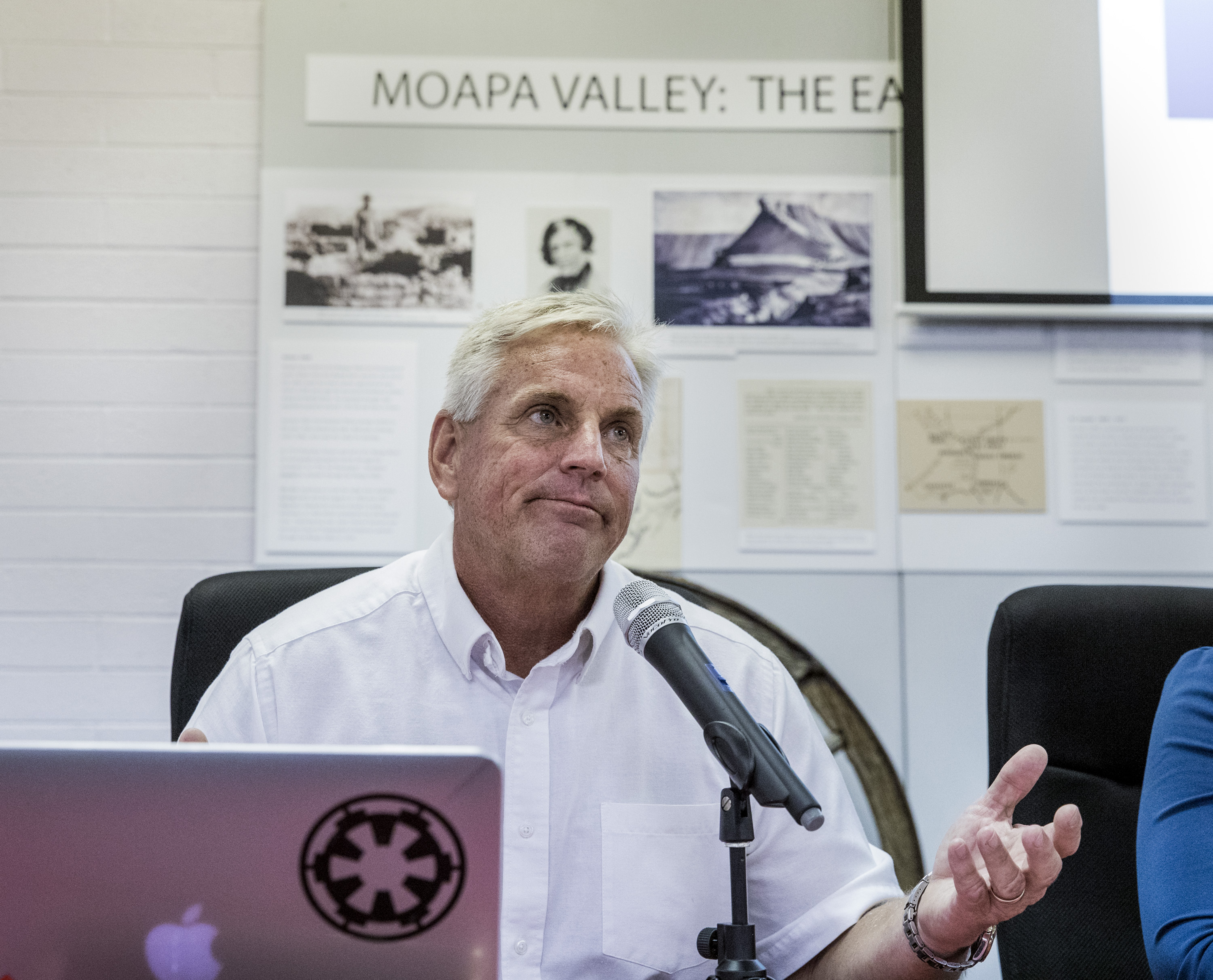
The big catch
When the ruling came down on Friday, it came with a big caveat. The state engineer announced in a statement that he planned to appeal his own ruling, a process that could effectively result in a reversal of his own decision, the decision opponents cast as the death of the pipeline project.
In the lengthy ruling that spanned more than 100 pages, King argued that he had no choice but to deny the permits because he was restricted by a 2013 court decision. That decision required the state engineer to review the permits using a methodology he said deviated from Nevada water law.
The state engineer’s office typically uses a formula known as “perennial yield” to determine how much water can be sustainably pumped from any one of Nevada’s 256 groundwater basins. The court said he needed to go further.
Managing any groundwater basin is a balancing act. Aquifers are recharged, often slowly and over many years, as precipitation and surface water seeps into the ground. At the same time, basins discharge water as it enters streams, gets sucked up by pumping or leaves through plant evapotranspiration.

The court order, as interpreted by the state engineer, asked him to appropriate water based on whether the pumping would capture the full amount of water leaving the aquifer through plant evapotranspiration “in a reasonable amount of time.” The water authority’s plans did not meet that standard and its applications to appropriate water in Spring Valley were denied.
A ripple effect?
Now the state engineer plans to challenge the methodology in court. In the ruling, King wrote the methodology would create a precedent antithetical to water law. It “would not only completely disrupt the way the state engineer currently administers groundwater basins in Nevada,” he wrote, “but would also disturb the public’s ability to appropriate groundwater in Nevada.” He argued such a formula could affect the ability of water users, such as farmers, ranchers, businesses and domestic well-owners, to use their water rights.
Because wells would need to be sited close to plant life, it could create water rights conflicts, increase the involvement of federal land managers in state groundwater management and potentially affect the water quality.

As a result, the state engineer said he would appeal his own ruling to get the methodology stricken from the record. A side effect of that is that the water authority could get its water rights back.
In the ruling, King suggested that had he used the office's standard methodology, he would have not denied rights to the water authority.
He wrote: “Although the state engineer believes there is water to appropriate in the four subject groundwater basins…, he is precluded from doing so as a result of the scope of those remand issues, which imposes new water policy into the science of water appropriation in Nevada.”
Entsminger said the water authority is evaluating its legal options.
“But for errors by the district court, he would have granted [the permits],” he said.
Simeon Herskovits, a lawyer for the Great Basin Water Network, applauded the state engineer’s decision to deny the permits but said that he didn’t think the appeal was valid or necessary. He argued that it was the state engineer’s office and the water authority who had taken a “novel approach” by ignoring aspects of Western water law during the project’s permitting process.
"We're the ones that have accused them of not following long-standing policy," he said.
Herskovits is confident the courts will continue to deny the water authority rights to pump in the four basins at question. He said his group had prevailed in the courts and that the state engineer's decision is a reflection of that.
"This ruling is another example of the state engineer finally conceding that the law, as the courts have interpreted it and defined it, forces him to deny these applications," Herskovits said.
A concrete win for tribes
There is one area where the state engineer’s ruling is final. King denied two applications to the water authority that fall outside the scope of the appeal. He said two of the water authority’s 15 applications in Spring Valley between Baker and Ely would conflict with federally-protected land that is a sacred site in the Shoshone and Goshute tradition. King wrote that approving the applications would “prove detrimental to the public interest.”
Doing so could harm the water that sustains sacred swamp cedars in Spring Valley, the tribe had argued in hearings the state engineer held last year.
In the tribes’ tradition, swamp cedars are used as a ceremonial gathering place to mark three devastating massacres in the 1800s. In 1859, the United States Army is estimated to have killed up to 800 Goshote and Shoshone people near the area, according to testimony. The trees and springs are included in a designation on the National Register of Historic Places.

At the hearing in 2017, Goshute Tribal Chairman Virgil Johnson said pumping that threatened the swamp cedars, also a site for traditional medicine, would be “catastrophic.” Paul Echohawk, the lawyer for the tribes in the state engineer ruling, said he was satisfied but surprised by the state’s ruling.
“We expected the state engineer would approve the applications,” he said.
The water authority’s next move
Nearly thirty years after the pipeline was proposed, the water authority has never needed it, even during the housing boom and nearly two decades of drought starting in 2000. The Las Vegas taps have never gone dry and the timeline for the pipeline, mired in litigation over water rights and land use permitting, continues to be pushed out further into the future.
A primary reason for that is conservation.
In the last two decades, per capita water consumption in Las Vegas has plummeted. With more efficient appliances and fewer lawns, people are using less water. Since 2002, water use per capita has decreased by about 40 percent. Many believe conservation can push use lower. Las Vegas’ per capita use still exceeds the amount residents in other Southwest cities consume.
The water authority said it will continue to look to conservation as the primary way to move the timeline for the pipeline back. The utility also plans to explore other options for finding new water sources. The water authority continues to consider the idea of funding a desalination plant to bolster its supplies.
"Conservation is the biggest resource option in our portfolio," Entsminger said.
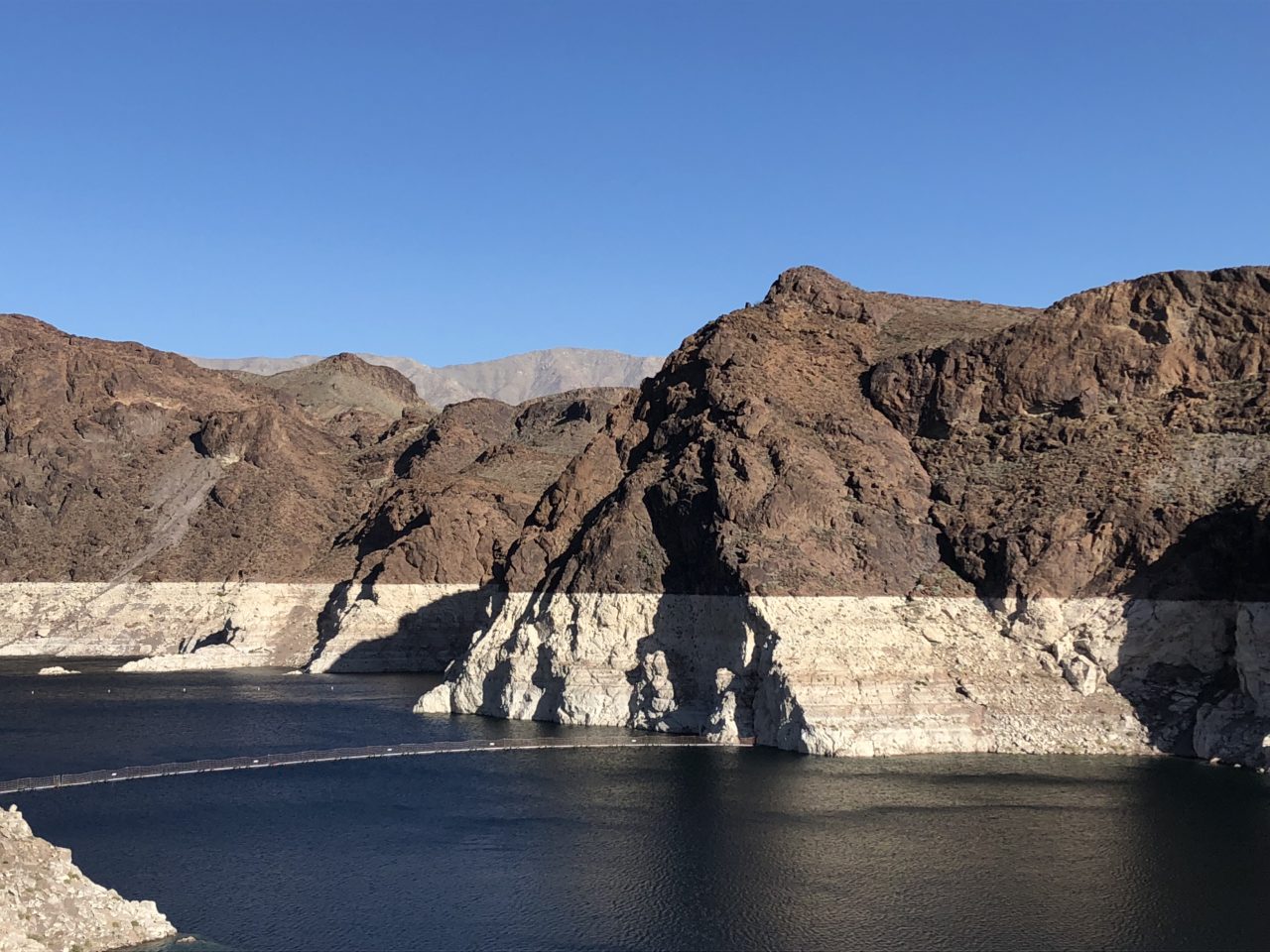
Even so, Las Vegas continues to see the pipeline as a long-term option, an insurance policy. The water authority relies on a 50-year water resource plan that matches its water portfolio to expected population growth. In order to ensure it can adequately plan into the future, it needs to include the pipeline.
In addition to having dozens of pending water rights applications in places like Snake Valley, the water authority owns ranches in Eastern Nevada that are associated with valuable water rights. Recently, the water authority applied for stock water rights for their livestock in the area, a small development but big enough to capture the attention of some of the pipeline’s chief opponents.
“The people I represent have no doubt, that as with every single thing the Southern Nevada Water Authority does relating to water in any of these valleys or areas, all of it ultimately is geared toward supporting SNWA’s ultimate export of water from those rural areas down to the Las Vegas Valley,” Herskovits said. “And that is their view about the stock water applications.”
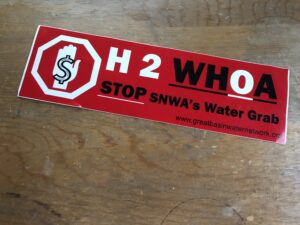
There is still concern, but Baker said the longer the pipeline is pushed out, the easier it will be to defeat.
"The longer it goes on and the more people that look at the science behind the pumping,” he said this week, “we think the better chance we have of winning in the long-run."
His family's main concern is the water authority might leave the area looking something like the Owens Valley, the Eastern California watershed near Bishop that was dried out in the early-1900s by the thirsty City of Los Angeles hundreds of miles away. And Baker noted, the dessicated Owens Valley started out with more water.
Pat Mulroy, who first proposed the pipeline as the former general manager of the Southern Nevada Water Authority, said she knew permitting the project would be a long and litigious process.
"We always knew this would be emotional and excruciatingly difficult,” she said.
Yet she rejected the comparison to Owens Valley, one that has been made often since Mulroy pitched the project three decades ago. She said given modern environmental laws, projects that are pursued today compared to projects proposed decades ago “operate on different planets.”
“But," Mulroy added, "it makes for great folklore.”
